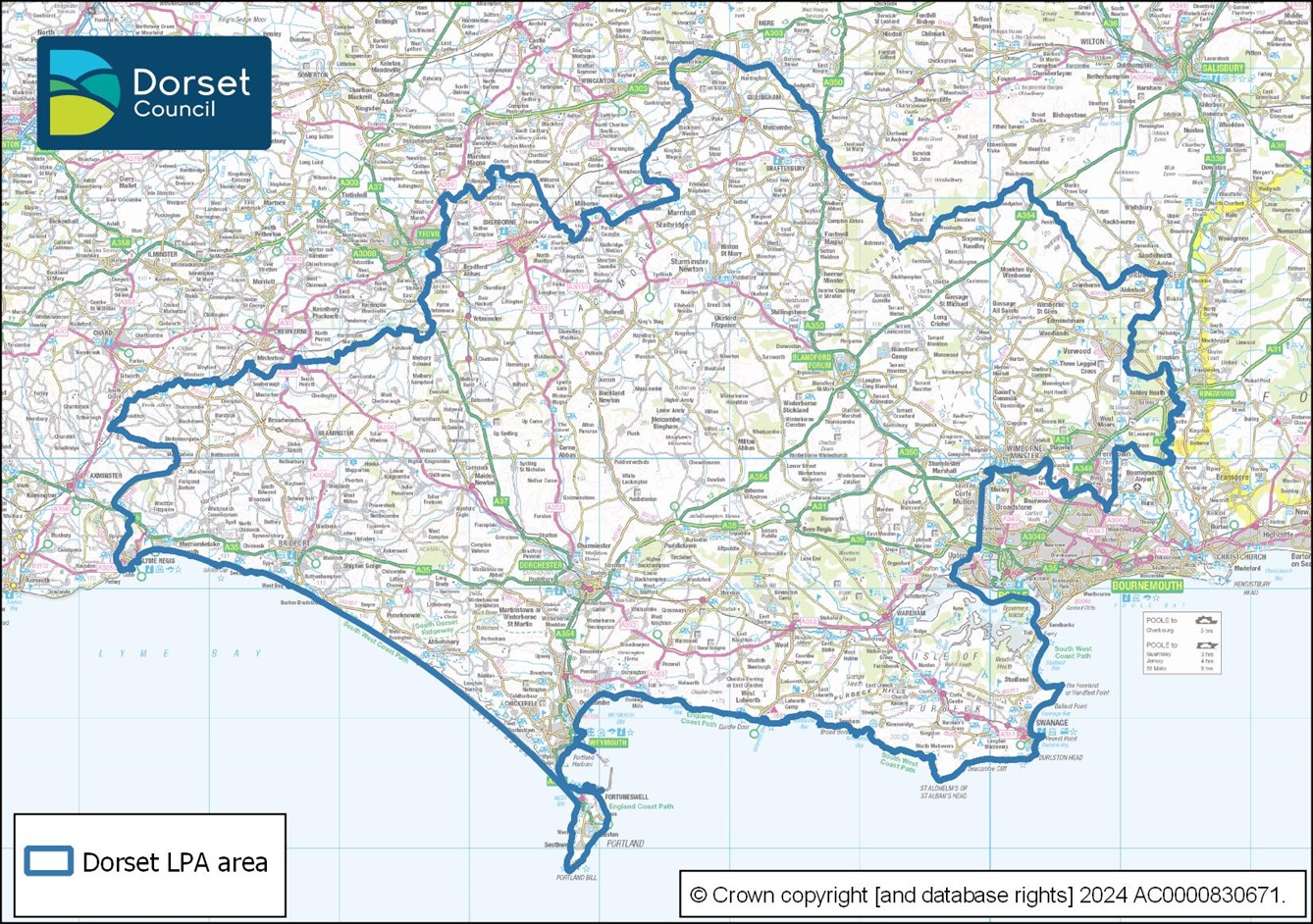Introduction
This is the Local Development Scheme (LDS) for Dorset Council, setting out a programme for the preparation of new development plan documents (1). The main development plan document that will be produced is the new local plan for Dorset. A Minerals and Waste Local Plan will also be produced. These development plan documents will be prepared to cover the whole of the Dorset Council LPA area as shown in Figure 1, unless stated otherwise.
Dorset Council is not currently producing any joint development plan documents however, some of the evidence to support plan production is being produced jointly. There is a need for development plan documents to be founded on proportionate evidence to enable an understanding of local issues relevant to plan production. The joint preparation of this evidence enables cross-boundary issues to be better understood and reflected in policy.

Figure 1: The Dorset Council area
Predicted timescales / dates for consultation periods and other key milestones are given in square brackets [], however these may be subject to change and will be updated regularly. The approach to engagement at each stage in the process will be endorsed by Dorset Council Cabinet.
In July 2023, the Government consulted on proposals to implement the parts of the Levelling Up and Regeneration Bill (now the Levelling Up and Regeneration Act) which related to plan-making in England. These proposals will substantially change the way local plans will be prepared and set out a provisional timetable for the introduction of the reforms, the expectation being that the necessary regulations, policy and guidance will be in place by Autumn 2024 enabling the first new-style local plans to be prepared from this point onwards.
It is accepted that there is an element of risk around following the new planning system when the detail of regulations and guidance have not been produced. However it would not be possible to proceed with the local plan under the current plan-making system given the proposed transitional arrangements.
(1) Required under section 15 of the Planning and Compulsory Purchase Act 2004 (as amended)
